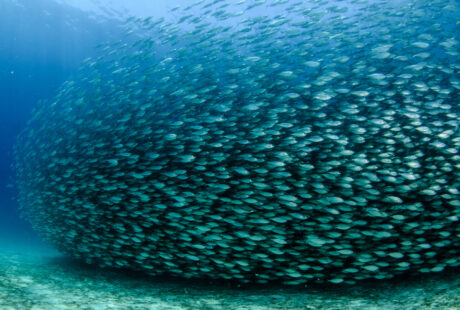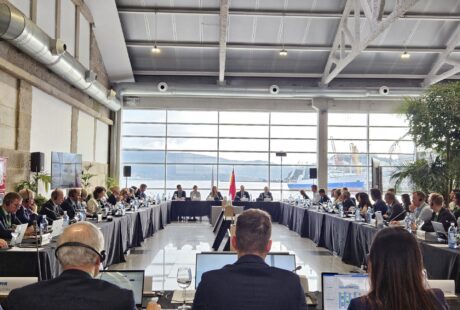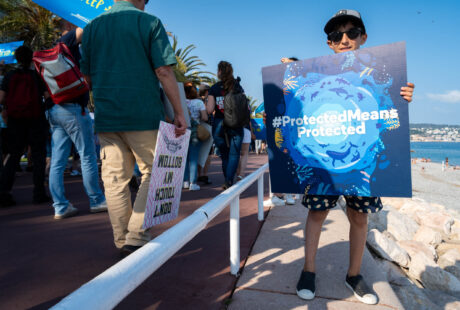Time is running out for the Baltic harbour porpoise. Their greatest threat? Bycatch – or accidental catch – in static fishing nets. In a new report, concerned non-governmental organisations (NGOs) propose solutions to eliminate bycatch of this critically endangered species.
Nets are left unattended (or static) in the Baltic Sea for extended time periods to catch fish. Three to seven harbour porpoises are accidentally caught and drown in these static nets in the Baltic Sea every year. This is four to ten times more than what scientists estimate their population can recover from.
In 2022, the European Union enacted legislation based on a list of emergency measures from an international marine science council. These measures suggested closing certain net fisheries – both temporarily and permanently – in key marine protected areas (MPAs) and mandating the use of pingers in some areas.
Pingers are said to ward away porpoises by emitting sound that deters them and keeps them away from fishing nets. Scientists and civil society support the use of pingers because they allow small-scale fishing to continue, without compromising the lives of porpoises.
However, some Baltic countries are rejecting the widespread use of pingers, the only technology currently available, citing that pingers can interfere with underwater military activities and equipment.
Solutions already exist
Practical alternatives to pingers that will safeguard harbour porpoise populations from bycatch are on the horizon. Other techniques and fishing gear could be used instead of static fishing nets, such as traps, pots and longlines. Policies should then encourage and incentivise their use so long as they are recycled and safe for marine life.
Governments should support small-scale fishers and monitor the effects of these changes; Furthermore, cannot counteract the positive effect of reducing one high-impact practice by increasing another, such as trawling or using turbot nets (also known to catch and hurt harbour porpoises).
German MPAs should be closed from November to April, at least, to protect the Belt Sea harbour porpoise population while benefiting local seabirds, often accidentally caught at high rates in the area. Areas in Poland and Finland would benefit from similar closures. Static Swedish fisheries should be closed in Hanö Bay, South of Öland and Northern Öland, followed by a gradual decrease in fishing and, ultimately, phasing out recreational static net fishing in Sweden, Finland, Estonia, and Latvia. For added protection, Sweden’s Southern Midsea Bank could be incorporated into the local Hoburgs bank marine protected area.
Although crucial to save the harbour porpoise, closing static fisheries in the Baltic would have significant social and economic impacts on local, small-scale fishers. It is imperative that decision-makers mitigate the potential impacts by supporting small-scale fishers and ensuring that they contribute to finding inclusive solutions.
Fishing measures not a catch-all solution
The measures and recommendations from 2022 are an important first step in protecting the harbour porpoise from bycatch and must be fully implemented. Still, pingers and seasonal fisheries closures are not enough to keep bycatch low enough to keep the critically endangered animal safe.
A combination of year-round closures, large MPAs, reduced fishing efforts and pinger use would foster a safer and lower impact Baltic Sea for the harbour porpoise to thrive and survive. Eliminating bycatch is one step to a much-needed transformative change in European fisheries and saving the Baltic harbour porpoise from extinction.
Posted on: 22 May 2023



